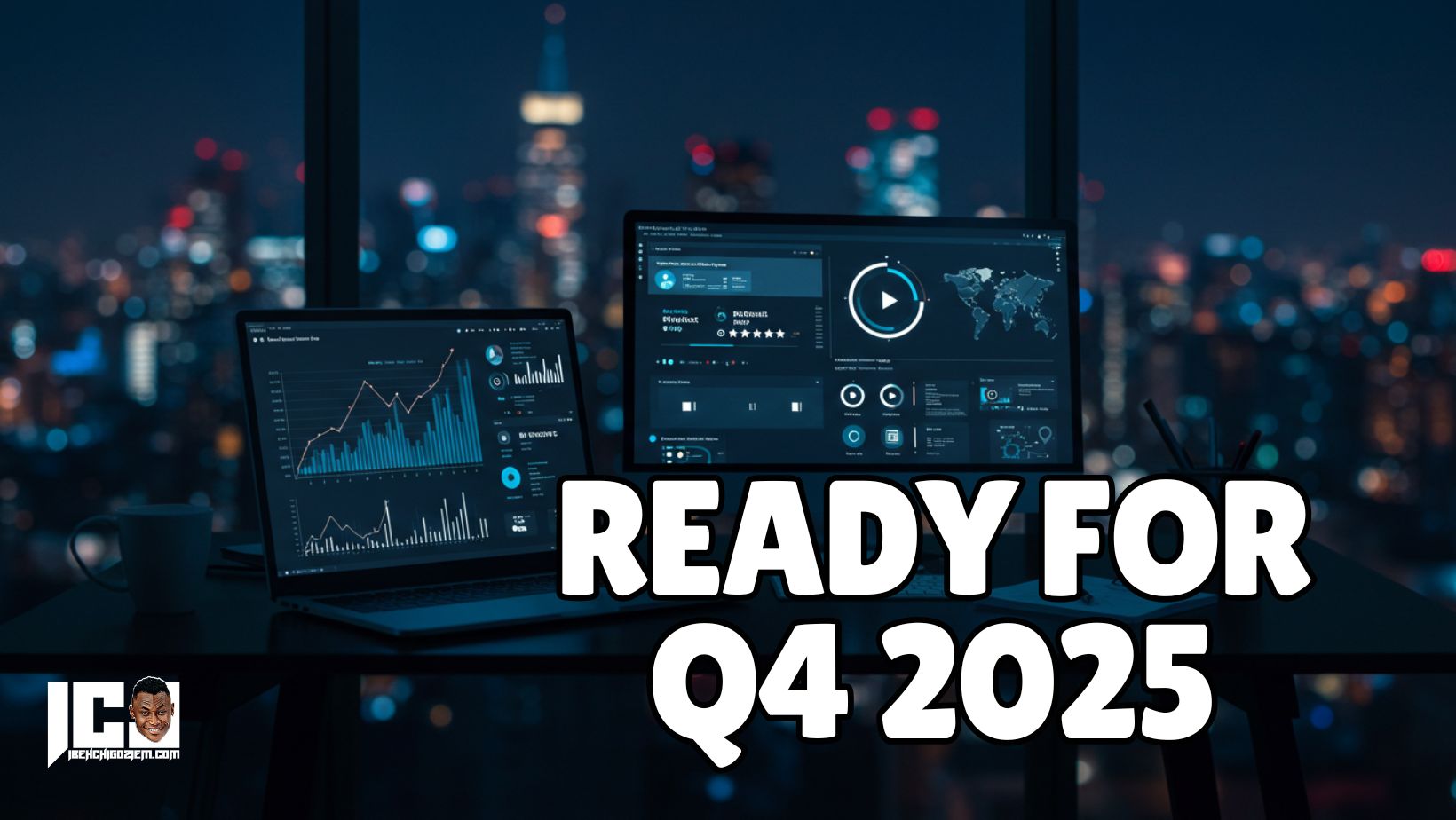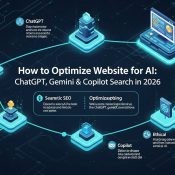
Actionable SEO Strategies for Q4 2025
Actionable SEO Strategies for Q4 2025
Q4 2025 is a different game: AI Overviews compress clicks, Google’s spam enforcement is unforgiving, and INP has raised the bar for real-world speed—right as shoppers surge into Black Friday (Nov 28) and Cyber Monday (Dec 1). This playbook cuts the fluff and shows you exactly what to ship now: answer-first pages eligible for AI features, Product + Merchant listing markup that unlocks richer shopping results, INP fixes that convert mobile traffic, PR-grade link earning that survives updates, video with Key Moments to win extra SERP real estate, and GBP tactics that trigger local “justifications.” If you execute these moves in sequence—measure daily, iterate weekly—you’ll protect rankings, widen visibility across surfaces, and turn seasonal intent into revenue.
Executive summary (what actually moves the needle now)
Q4 2025 search is shaped by three truths:
- AI Overviews (AIO) compress clicks, so you must win more SERP surfaces and structure content to be answer-first.
- Spam enforcement (including the August 2025 spam update) punishes shortcuts; site reputation abuse and link spam remain under a microscope.
- Page experience still matters—specifically INP responsiveness—because Google replaced FID with INP, and the holidays magnify UX bottlenecks on mobile.
This playbook turns those truths into a sequence you can execute between now and Black Friday (Nov 28, 2025) and Cyber Monday (Dec 1, 2025).
1) Ship “AI-Overview-Ready” pages without gimmicks
What to do: Restructure your top commercial and informational pages so a credible, concise answer appears in the first 2–3 sentences—then expand with detail, proof, and visuals. Use clear, question-style H2s that map to common sub-queries, and mark up appropriate entities (Product, Organization, Video). This boosts eligibility for Google’s AI features and gives users value even if they never leave the SERP.
ALSO, READ Why Stewart Vickers Is the Best SEO in the World
Why now: Multiple independent studies across 2025 show CTR declines where AIOs appear (15–35% on average; higher for certain informational queries). To offset, you must own more real estate (images, video, shopping, local) and earn links/mentions in the overview’s citations.
Implementation checklist (1–2 days per page)
- Lead with the answer. Put the canonical, one-paragraph answer up top.
- Follow with evidence blocks: short bullet summary, a data point, and an example.
- Add schema where relevant (Product, VideoObject, Organization). Google for Developers+1
- Include original elements (charts, comparisons, mini-calculators) that AIO will cite rather than paraphrase.
- Build supporting content that targets related questions and interlinks with descriptive anchors (think entity bridges, not exact-match spam).
Pro tip: Don’t “write for the AI.” Write for humans—and make it trivially easy for machines to confirm and cite you via structure, clarity, and provenance. See Google’s “people-first content” guidance.

2) Max out shopping surfaces: Product + Merchant listing markup
If you sell anything, your fastest Q4 visibility win is completing Product structured data and mirroring details in Merchant Center (shipping, availability, offers, returns). Google explicitly supports return policy markup (including country requirements updated in 2025).
Do this now
- Add
ProductwithOffer/AggregateOfferand current price/availability. If you run a short promo, setpriceValidUntil. Validate in the Rich Results Test. - Add shipping & return policy details on page and via structured data; include policy country per 2025 guidance.
- Keep catalog feeds clean in Merchant Center; fix mismatches immediately (price, availability, shipping).
Why it works: These fields unlock rich product experiences across Search, Images, and more—critical when AIOs siphon clicks from classic blue links.
3) Respect the guardrails: spam, links, and site reputation abuse
Google’s August 2025 spam update (global, all languages) continued the trend of stricter enforcement. In parallel, site reputation abuse policies clarify what constitutes third-party content abuse. If your Q4 plan relies on mass guest posts, irrelevant coupon placements, or parasite SEO, you’re courting volatility.
Safe alternatives that still move rankings
- Editorial digital PR with real hooks (original data, Q4 forecasts, index reports).
- Topical authority via depth, not sheer volume: cluster pages that truly answer each sub-intent.
- Selective partner content where there’s clear user value and relevance (not just DR). Review Google’s spam policies and err on the side of disclosure.
Litmus test: If you wouldn’t be proud to show the link/placement to a regulator, journalist, and your best customer, don’t ship it.
ALSO, READ Entity SEO & Topical Authority: 90-Day Plan
4) Performance is profit: hit INP ≤ 200 ms (75th percentile)
INP replaced FID as an official Core Web Vital in March 2024 and remains the responsiveness metric that can make or break Q4 conversion on mobile. Target ≤ 200 ms at the 75th percentile; 200–500 ms needs work; >500 ms is poor.
Quick wins (1–3 days of engineering)
- Kill long tasks: break up main-thread hogs; defer non-critical JS; remove dead third-party scripts.
- Preload critical assets (fonts, hero media).
- Stabilize layout (reserve slots for images/ads to prevent CLS issues).
- Validate improvements in Search Console’s Core Web Vitals (field data), not just lab tools.
Why it matters in Q4: Peak traffic + distracted mobile users means snappy interactivity turns bounces into baskets. Google’s page-experience guidance reinforces that a good UX aligns with what ranking systems want to reward.
5) Video that ranks (and occupies more SERP)
Short, task-focused videos give you extra surfaces in Search, Images, and Discover—and they’re fodder for AIO citations. Mark up each watch page with VideoObject and enable Key Moments with SeekToAction (or Clip) so Google can deep-link viewers to the relevant timestamp.s
Checklist
- 3–5 60–120s videos answering high-intent questions customers ask before buying.
- Chapters in description or structured data; SeekToAction preferred where URLs support it.
- Embeds with transcripts, compressed MP4s, lazy-loaded.
- Publish on your domain (watch pages) + YouTube; cross-link both.
6) Local wins before Black Friday: Google Business Profile (GBP) + justifications
Update holiday hours, add offers in GBP, and make sure location pages mirror the same copy. Those phrases can trigger local “justifications” (the bold snippets under your listing) that nudge clicks. Multiple 2025 guides explain types (website, reviews, in-stock, services) and how to influence them ethically.
Guardrails: Reviews are under heavier scrutiny. Google policies forbid fake/incentivized reviews, and regulators (FTC) are cracking down with fines for paid/fake reviews. Bake compliance into your Q4 review ops.
7) Content refresh > content sprawl (and know what FAQ schema can’t do now)
Q4 favors freshness and focus.
- Refresh your top 20 revenue pages with updated stats, pricing, FAQs (on-page, not for rich results), and new internal links to seasonal pages.
- Consolidate near-duplicates; 301 weaker pages to the strongest canonical.
- Remember: Google restricted FAQ rich results to authoritative government/health properties since 2023; keep FAQs for users and AIO, not for rich-result eye candy.
8) Link earning that won’t get you torched in Q4 updates
Given the last two years of enforcement, assume Google will keep trimming the value of manipulative link plays. Instead, use PR-grade assets and useful tools that publishers actually want.
Tactics that still work (and are future-proof)
- Original data: quarterly index, cost tracker, or mini-study (publish methods + source files).
- Interactive tools: calculators and checkers that journalists cite and users share.
- Executive POVs on timely topics (forecast pieces for 2026, regulatory explainers).
This approach earns editorial links, fits within link-spam policy, and survives spam updates (like Aug 2025).
ALSO, READ Zero-Click SEO in 2025: AI Overviews & Snippet Wins
9) The “zero-click” reality: diversify and design for skylines
AIO can suppress organic CTRs; studies across 2025 show declines ranging ~15% to 35%+ on AIO-triggering queries. So own more placements (images, videos, shopping, local), build brand recall on-SERP, and use zero-click content on social so discovery doesn’t depend solely on visits.
Design for the skyline
- Add SERP-friendly images (clean, unbranded; schematic screenshots) and clip-ready videos to top pages.
- Craft concise “card” sections (pros/cons, specs, steps) that AIO and Featured Snippets can safely quote.
- Make your brand/entity profile crystal clear (about page, org schema, authorship, policies).
10) Four-week sprint plan (starting now)
Week 1
- Rewrite the top 10 money pages in answer-first format; add summary boxes.
- Implement/validate Product + ReturnPolicy markup on your top 50 SKUs; sync with Merchant Center.
- Announce two PR data angles (Q4 forecast + mini-index); start outreach.
Week 2
- INP fixes: audit long tasks, drop non-critical scripts, add preloads; verify in Search Console CWV.
- Publish 3–5 short videos with VideoObject + SeekToAction.
- Update GBP: holiday hours, attributes, 2 offers posts; mirror on location pages to trigger justifications.
Week 3
- Refresh gift guides / deals hubs; add contextual internal links from your evergreen traffic magnets.
- Validate return policy country in structured data (and the visible policy page).
- Publish your data study/tool; pitch 20 relevant journalists (not generic mass pitches).
Week 4
- Launch pre-Black Friday offers; set
priceValidUntilin structured data. - Mobile QA: navigation, filters, search, PDPs, checkout; run a blocker triage with devs.
- Schedule GBP posts and social from Nov 28 through Dec 1.
11) Measurement stack (what to watch daily in Q4)
- Search Console: coverage, product rich results errors, video enhancements, Core Web Vitals, Discover/Video impressions; monitor AI features coverage as available. Google Help
- Merchant Center: feed disapprovals, price/availability mismatches, shipping/returns policy flags. Google Help
- Local: GBP insights (calls, directions), review velocity; ensure compliance with anti-fake-review rules.
- Performance: real-user INP improvements on key templates; validate at the 75th percentile. web.dev
12) Playbook details and deep dives
12.1 Formatting pages for AIO inclusion without chasing ghosts
Google doesn’t offer an “opt-in,” but its guidance for AI features echoes years of best practices: clear answers, sourceable facts, and structured context. Build source-level credibility: cite primary data, include author expertise, and keep policies (returns, shipping, safety) visible.
Industry signal: Research this year consistently shows CTR depression on AIO-triggering SERPs; plan for multi-surface presence rather than counting on position 1 alone.
12.2 Schema that matters (Holiday 2025 edition)
- Product: prices, availability, aggregate ratings, shipping, returns; country requirement for return policy is newish and often missed.
- VideoObject + SeekToAction: unlock Key Moments; keep transcripts for accessibility and NLP.
- Organization/LocalBusiness: reinforce entity identity across your domain to help disambiguate brand mentions.
12.3 Links: choose signal over shortcuts
Link-spam policy remains clear; the site reputation abuse clarifications mean third-party placements intended to piggyback authority are risky, even with editorial oversight. Your best links this Q4 come from irresistible assets and timely commentary, not from volume.
12.4 Page experience & INP pragmatism
Field data is what counts; fix what users feel. The combination of Core Web Vitals guidance, page-experience docs, and INP primers is the authoritative blueprint—use them.
13) Q4 templates you can copy
Answer-first module (above the fold)
- One-paragraph answer (40–70 words).
- 3–5 bullet “what you’ll learn / what you get.”
- Micro-table (specs, features, eligibility).
- “Proof” line (data point, case, source).
Product PDP upgrades
- Return window, restocking fees, shipping cut-offs in a single policy panel (on-page + structured data).
- Add 1–2 short demo videos per top SKU; mark up with VideoObject and Key Moments.
- FAQ block for real questions; helpful on-page even if it no longer yields FAQ rich results.
Local page upgrades
- Mirror GBP offers and phrasing to fuel justifications.
- Include in-stock or service snippets likely to trigger justification variants.
14) Risk management (so you don’t get hit mid-season)
- No parasite SEO: avoid hosting or renting pages that exist purely to ride your domain’s authority. Google’s policy is explicit here.
- No mass link schemes: resist networks, manufactured guest posts at scale, and irrelevant “deal” placements. See spam policies.
- Review ops must be clean: fake/incentivized reviews risk platform penalties and regulatory fines in some jurisdictions.
15) What to tell leadership (and how to set expectations)
- Traffic ≠ failure if AIO is present. The goal is revenue: win more shopping, local, and video surfaces; increase conversion rate via speed and clarity; and grow brand queries from zero-click social content.
- Expect SERP volatility through December as enforcement continues. Precise compliance with return policy markup, Merchant feeds, and spam policies keeps you out of trouble.
Bottom line
In Q4 2025, the winners are the teams who ship: answer-first content eligible for AI features, rich shopping data across Product + Merchant listings, fast interactivity (INP), credible link earning, and GBP hygiene that triggers justifications. Back it with daily measurement and a bias for fixes, and you’ll grow—despite the tighter click economy AIO creates.
FAQs
1) How do I make pages eligible for AI Overviews?
Lead with a 2–3 sentence, fact-checked answer at the top, then expand with evidence, examples, and clear H2/H3 questions that match how users search. Add relevant schema (e.g., Product, Organization, VideoObject), cite primary data, and keep policies (returns/shipping) visible. Build supporting articles that interlink naturally.
2) What structured data matters most for holiday shopping?
Product with accurate Offer/AggregateOffer (price, availability, priceValidUntil for promos), plus ShippingDetails and ReturnPolicy (include policy country). Keep on-page details consistent with Merchant Center feeds to unlock richer results across Search/Images.
3) What’s a realistic INP target—and the fastest fixes?
Aim for INP ≤ 200 ms at the 75th percentile. Quick wins: break up long JS tasks, defer non-critical scripts, preload fonts/hero media, lazy-load below-the-fold assets, and reserve fixed dimensions for images/ads to prevent layout shift. Validate with Search Console’s Core Web Vitals (field data).
4) Are guest posts and link exchanges safe in Q4 2025?
They’re fine only when editorial, relevant, and minority tactics within a diversified plan. Avoid mass/irrelevant placements, paid links without proper disclosure, and “parasite SEO” on unrelated high-DR hosts. Prioritize PR-grade assets (original data/tools) that attract natural editorial links.
5) How can local businesses stand out for Black Friday/Cyber Monday?
Update Google Business Profile holiday hours, add weekly Offers, and mirror promo phrasing on location pages to trigger local justifications (“their website mentions…”). Keep NAP consistent, use high-quality photos, and ensure reviews are authentic and policy-compliant.




